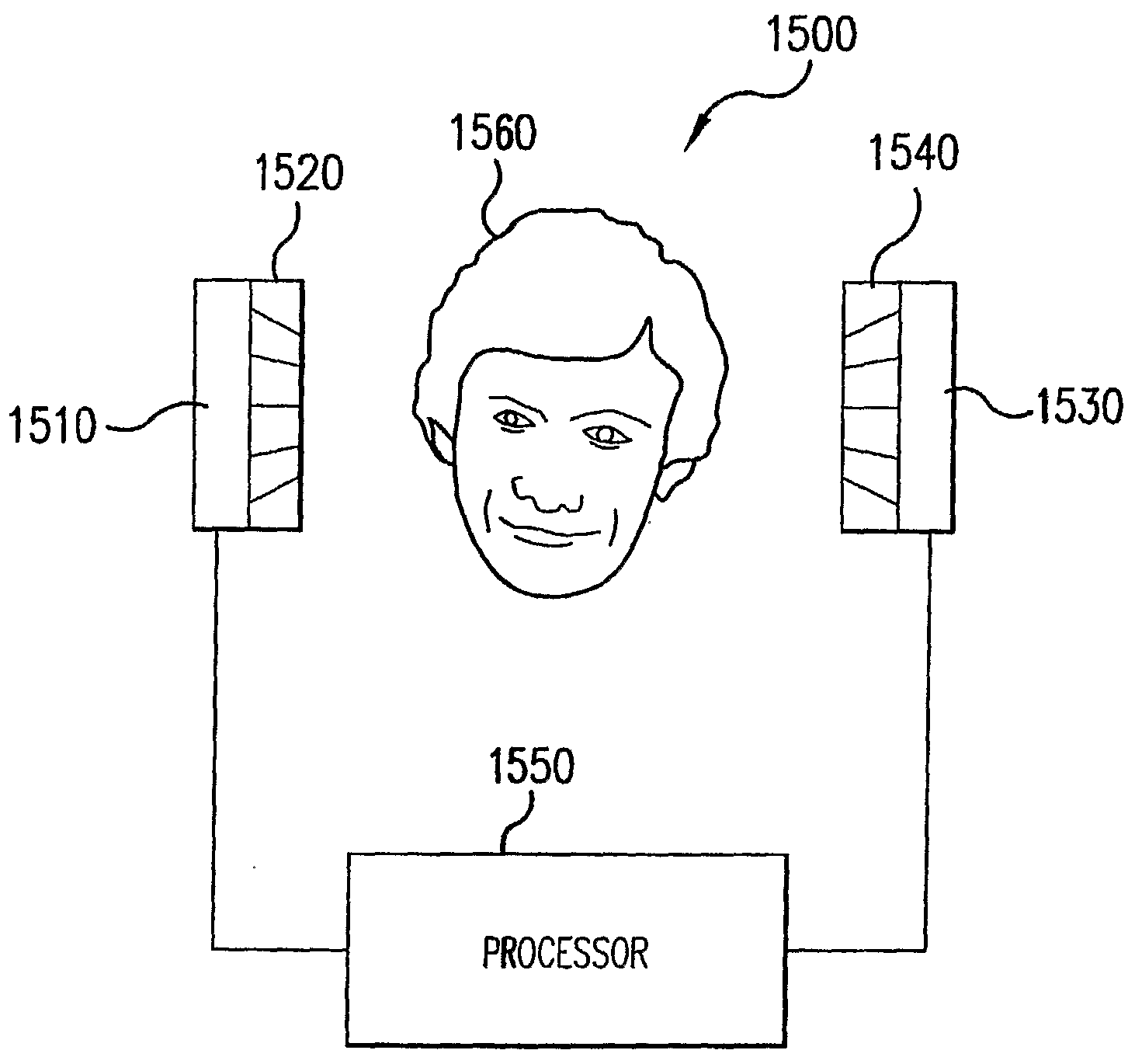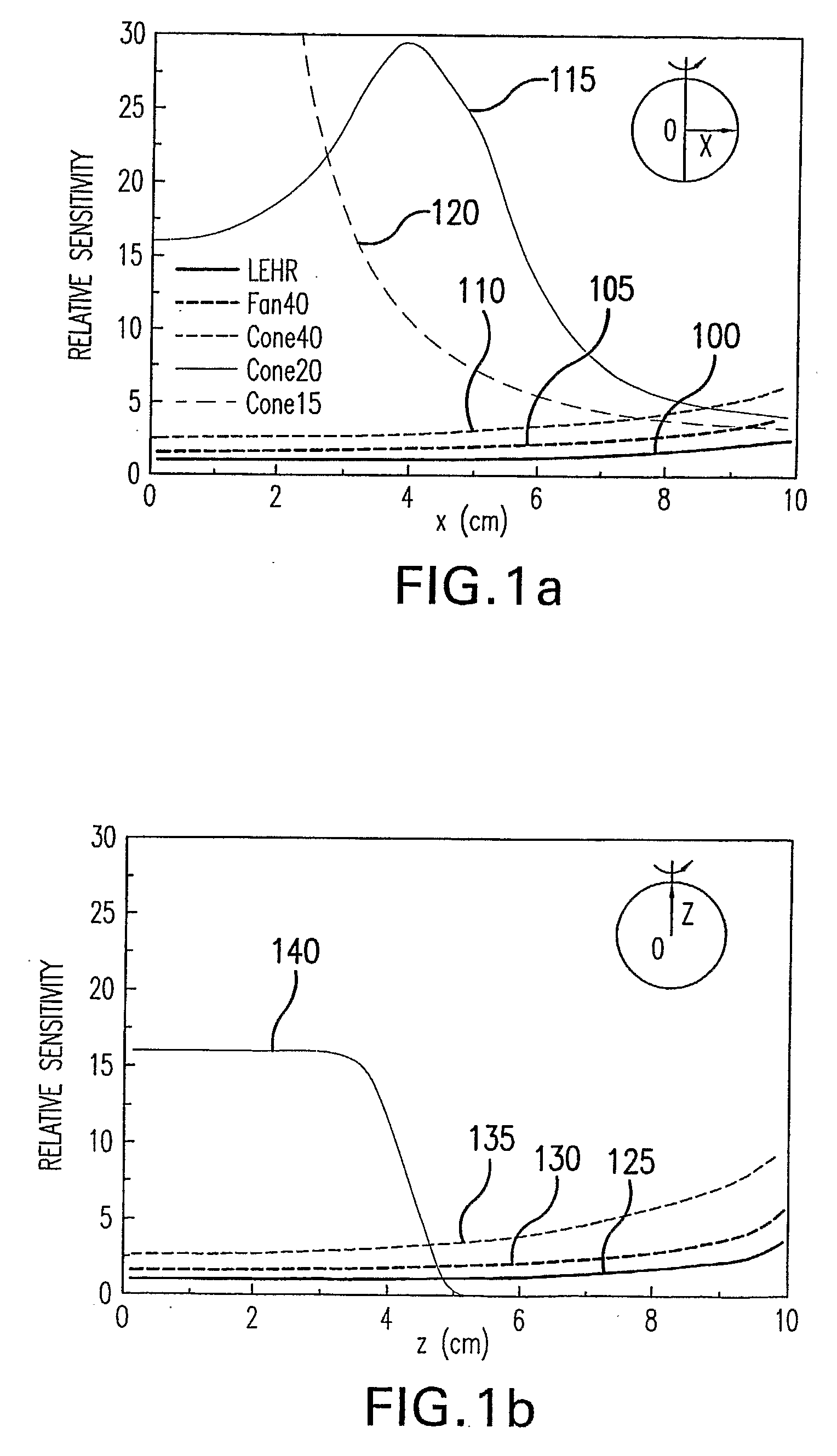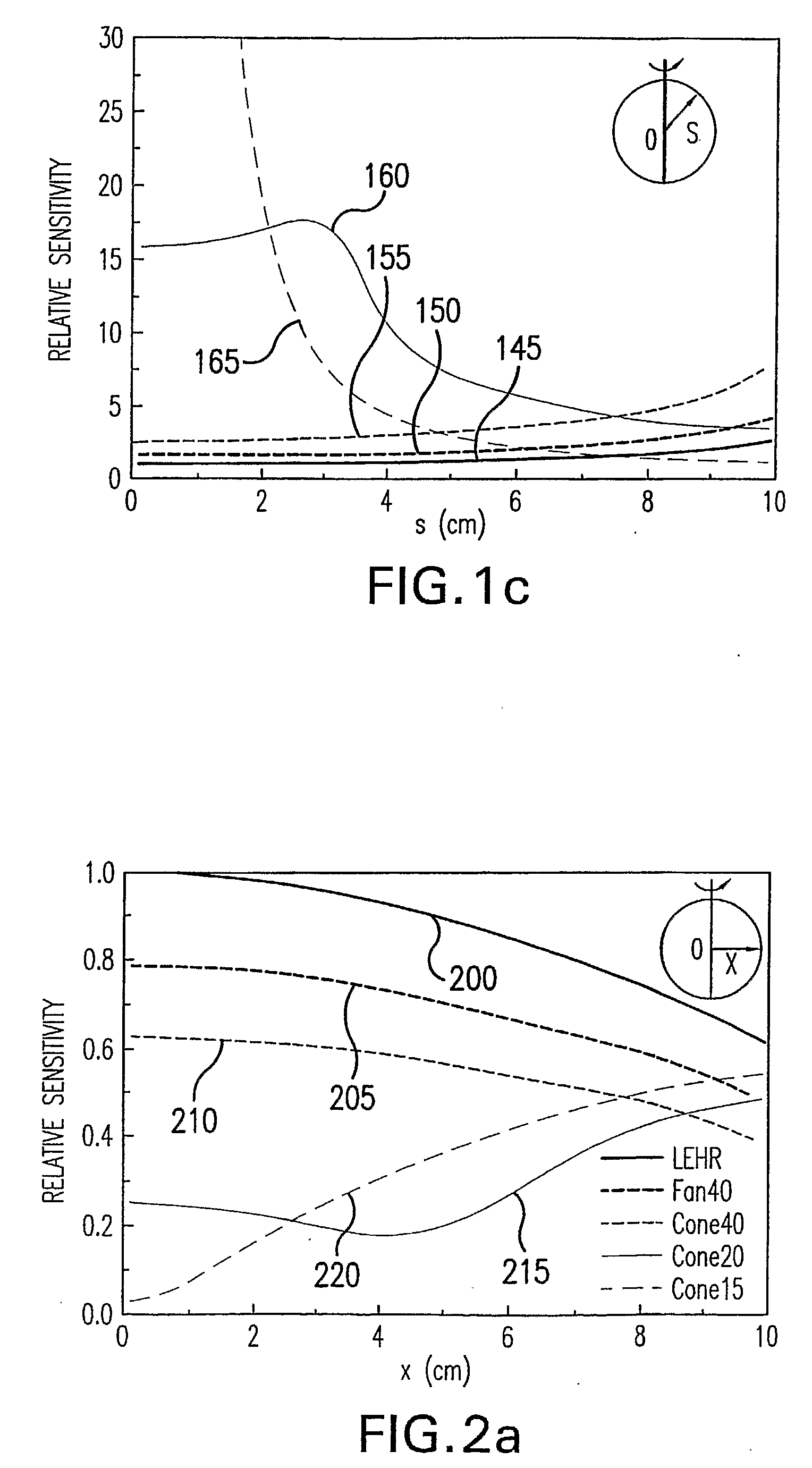System and Method for Performing Single Photon Emission Computed Tomography (Spect) with a Focal-Length Cone-Beam Collimation
a single-photon emission and computed tomography technology, applied in tomography, instruments, applications, etc., can solve the problems of inability or inability to achieve a centrally-peaked sensitivity function, spect imaging of deep brain structures may be compromised by a loss of photons, and achieve precise estimates of striatal activity concentrations , the effect of improving detection and activity quantification
- Summary
- Abstract
- Description
- Claims
- Application Information
AI Technical Summary
Benefits of technology
Problems solved by technology
Method used
Image
Examples
Embodiment Construction
[0050]A geometric sensitivity can represent a ratio of the number of photons detected to the number emitted from a source. When the attenuation is negligible, the sensitivity of a parallel-hole collimating arrangement may be independent of a source position, while that of a converging collimating arrangement can be position-dependent. A sensitivity of converging collimating arrangements may be greater than that of parallel collimating arrangements, and cone-beam collimating arrangements can provide greater sensitivity than fan-beam collimating arrangements having the same focal length. The sensitivity of both fan- and cone-beam collimating arrangements can depend on their focal lengths.
[0051]The sensitivity of several collimating arrangements can be determined based on analytic collimating arrangement aperture functions such as those described in S. Genna et al., “Annular single-crystal emission tomography systems” in The fundamentals of PET and SPECT (Wernick M N and Asrsvold J N),...
PUM
 Login to View More
Login to View More Abstract
Description
Claims
Application Information
 Login to View More
Login to View More - R&D
- Intellectual Property
- Life Sciences
- Materials
- Tech Scout
- Unparalleled Data Quality
- Higher Quality Content
- 60% Fewer Hallucinations
Browse by: Latest US Patents, China's latest patents, Technical Efficacy Thesaurus, Application Domain, Technology Topic, Popular Technical Reports.
© 2025 PatSnap. All rights reserved.Legal|Privacy policy|Modern Slavery Act Transparency Statement|Sitemap|About US| Contact US: help@patsnap.com



